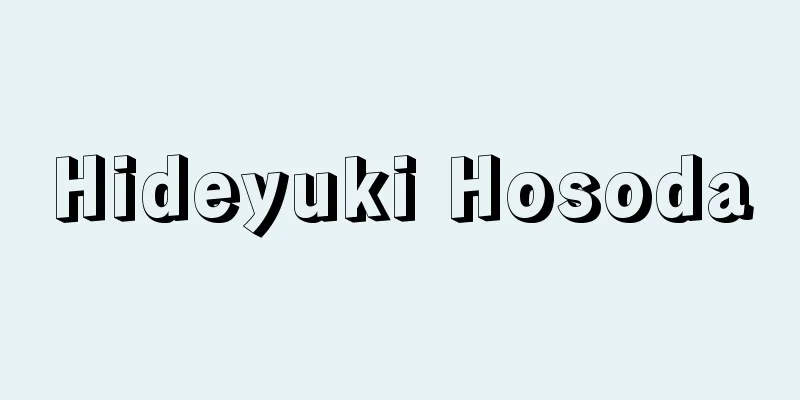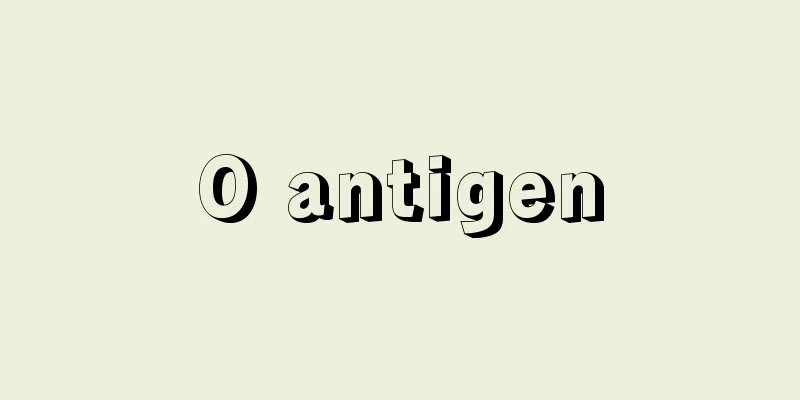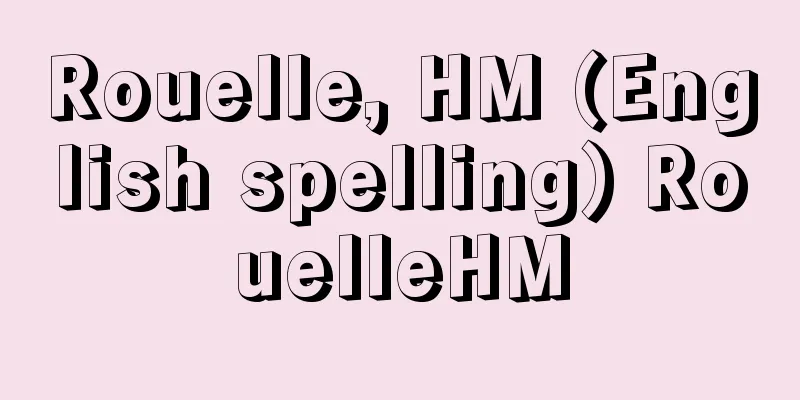Hideyuki Hosoda

|
An ukiyo-e artist from the mid to late Edo period. He was born as the eldest son of a samurai with a stipend of 500 koku. His grandfather was the Shogunate's treasurer. His real name was Hosoda Tokitami, and he was commonly known as Minnojo or Yasaburo. As an ukiyo-e artist, he was known as Chobunsai Hideyuki. In 1772 (An'ei 1), he succeeded to the family headship, in 1781 (Tenmei 1) he was assigned to the position of small storehouse, in 1783 he was transferred to work in the Nishimaru, and at the end of the same year he became a meeting attendant (non-position), and in 1789 (Kansei 1) he retired, handing over the family headship to his son. It is said that he first studied painting under the Shogunate's inner palace painter Kano Eisen'in Michinobu, and later studied ukiyo-e under Bunryusai. During the Tenmei era (1781-1789), while still a samurai, he entered the world of ukiyo-e and began drawing illustrations for kibyoshi (yellow cover books) and nishikie (colored woodblock prints). Admiring the style of Torii Kiyonaga, he established his own style of painting tall, neat and tidy beauties, and was active as a popular artist during the Kansei era (1789-1801). In contrast to Kitagawa Utamaro's large-head paintings, he showed his talent in painting full-body beauties, and influenced Utamaro, who was at the height of his fame at the time. His representative nishikie works include "Seiro Bisen Awase" and "Seiro Geisha Sen" (both triptychs). He also excelled in hand-painted paintings based on the authentic painting techniques of the Kano school, and left behind many excellent works in the form of hanging scroll paintings of beautiful women depicting courtesans and geisha, as well as various "Sumida River Picture Scrolls." He had many disciples, including Eisho, Eisui, Eiri, and Eijin, who were active in the field and formed a school of their own. [Tadashi Kobayashi] "Ukiyo-e Taikei 6: Utamaro/Eiichi" by Sadao Kikuchi (1973, Shueisha) National Diet Library Hideyuki Hosoda, "Furyu December: Autumn" "Ise" 1801 (Kansei 13) How I long for the mountains of Miwa, I think that no one will ever come to find me . National Diet Library Hideyuki Hosoda's Thirty-six Poets Source: Shogakukan Encyclopedia Nipponica About Encyclopedia Nipponica Information | Legend |
|
江戸中期から後期の浮世絵師。禄高(ろくだか)500石の旗本の長男として生まれる。祖父は幕府の勘定奉行(ぶぎょう)。本名細田時富、俗称民之丞、弥三郎。浮世絵師としては鳥文斎(ちょうぶんさい)栄之と名のった。1772年(安永1)家督を継ぎ、1781年(天明1)小納戸(こなんど)役、1783年西丸勤務にかわり、その年の末には寄合(よりあい)(非職)、1789年(寛政1)家督を子に譲って隠居した。絵は初め幕府の奥絵師狩野栄川院典信(かのうえいせんいんみちのぶ)に学び、のち文竜斎に浮世絵を学んだと伝える。天明(てんめい)年間(1781~1789)に旗本の身のまま浮世絵の世界に加わり、黄表紙(きびょうし)の挿絵や錦絵(にしきえ)の作画を始める。鳥居清長の作風を慕って長身の清楚(せいそ)な美人画に独自の様式を確立、寛政(かんせい)年間(1789~1801)に人気絵師として活躍した。喜多川歌麿(うたまろ)の大首絵(おおくびえ)に対して、全身像の美人画に特色を発揮し、当時全盛の歌麿にも影響を与えている。錦絵の代表作に『青楼美撰合(せいろうびせんあわせ)』『青楼芸者撰(げいしゃせん)』(ともに三枚続)がある。また、狩野派の本格的な画法を基礎として肉筆画にも優れ、各種の「隅田川絵巻」のほか、遊女や芸者を扱った掛幅装の美人画に佳作を多く残している。門人も多く、栄昌、栄水、栄里、栄深らが活躍して、一派を形成した。 [小林 忠] 『菊地貞夫著『浮世絵大系 6 歌麿/栄之』(1973・集英社)』 国立国会図書館所蔵"> 細田栄之『風流十二月 季秋』 「伊勢」 1801年(寛政13) みわの山いかに待ち見む年ふともたづぬる人もあらじと思へば国立国会図書館所蔵"> 細田栄之『女房三十六歌仙』 出典 小学館 日本大百科全書(ニッポニカ)日本大百科全書(ニッポニカ)について 情報 | 凡例 |
<<: Hosocho (thin butterfly) - Hosocho
Recommend
Koishikawa Yojosho
During the Edo period, the shogunate established ...
interval scale
…These analytical methods, along with regression ...
Domestic Relations Trial - Kajishinpan
The judicial procedures for family-related cases ...
Touat (English spelling)
A group of oases in the Saoura region in the centr...
Hammering - Tankin
A type of metalworking technique. It is a techniq...
James Ensor
Belgian painter and printmaker. Born in Ostend on...
Lead acid battery - Namarichikudenchi (English spelling)
A typical storage battery that uses porous lead d...
Shuraren - Unopened
…He studied at Uchiyama's residence, and wrot...
One section cut - One passage cut
A type of shakuhachi with five holes and one sect...
Osaka Hamagigi - Osaka Hamagigi
...It has no scales. A closely related species, t...
Shè (English spelling)
It refers to the area around She County in Anhui P...
Nightingale words - Nightingale words
… [Higuchi Hiroyoshi] [Folklore] Because it appea...
Talcahuano (English spelling)
A port city in south-central Chile facing the Paci...
El Polito
…His performance style was flashy and popular, bu...
Rice, TD (English spelling) RiceTD
...Famous troupes included the Virginia Minstrels...
![Korean Air [company] - Korean Air](/upload/images/67cc157398023.webp)






![August Thyssen-Hütte [company] - August Thyssen-Hütte](/upload/images/67cf192ed4156.webp)

